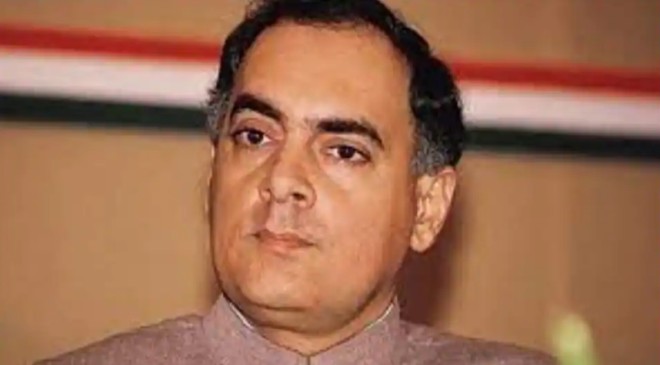On May 21, 1991, Rajiv Gandhi was assassinated by a Liberation Tigers of Tamil Eelam (LTTE) suicide bomber during an election rally in Sriperumbudur in Tamil Nadu
New Delhi: 31 years ago on this day – May 21, 1991 – a terrible tragedy struck India as Congress leader and ex-prime minister Rajiv Gandhi was assassinated by a Liberation Tigers of Tamil Eelam (LTTE) suicide bomber during an election rally in Sriperumbudur in Tamil Nadu.
Rajiv Gandhi, born on August 20 in 1944, took over the charge of the Congress in 1984 following the assassination of his mother and then Prime Minister Indira Gandhi. He became India’s youngest Prime Minister at the age of 40 when he assumed office in October 1984. He served as the Prime Minister of India till December 2, 1989.
Remembering the former PM, current PM Narendra Modi as well as Rajiv’s family members and Congress leaders Sonia, Priyanka and Rahul Gandhi paid homage today on Rajiv Gandhi’s 31st death anniversary. Rahul also shared this heartfelt post:
Meanwhile, earlier this week on Wednesday (May 18), in a landmark verdict, the Supreme Court had ordered the release of AG Perarivalan, a convict in the Rajiv Gandhi assassination case. Here’s a timeline of events, starting with the assassination:
May 21, 1991: Rajiv Gandhi is assassinated at Sriperumbudur in Tamil Nadu. The assassin, a woman named Dhanu belonging to the Liberation Tigers of Tamil Eelam (LTTE), triggers a belt bomb, killing Rajiv Gandhi, herself and several others.
May 24, 1991: The investigation is handed over to a Special Investigation Team (SIT) of the Central Bureau of Investigation (CBI).
June 1991: 19-year-old A G Perarivalan is arrested by the CBI. Perarivalan was accused of aiding Sivarasan of LTTE, who masterminded the assassination. He bought two nine volt batteries, which were used in the bomb that killed Rajiv Gandhi. Like others accused in the case, he is booked under the Terrorism and Disruptive Activities (Prevention) Act (TADA).
January 1998: 26 accused, including Nalini and Perarivalan, were sentenced to death by the TADA court sentences.
May 11, 1999: While acquitting 19 persons in the case, the Supreme Court upholds death sentence of four – Murugan, Santhan, Perarivalan and Nalini. Three others, Ravichandran, Robert Payas and Jayakumar, are given life sentences.
April 2000: The then Tamil Nadu governor commutes Nalini’s death penalty to life, based on the recommendation of the state cabinet. Sonia Gandhi made a public appeal too.
August 2011: Then-president Pratibha Patil rejects mercy petitions of Santhan, Murugan and Perarivalan after 11 years. While the three convicts were to be hanged on September 9, 2011, Madras High Court stays the execution orders.
January 2014: Supreme Court commutes death penalty of three into imprisonment for life.
December 2015: A mercy petition is submitted by Perarivalan to the Tamil Nadu governor seeking release under Article 161 of the Constitution. After he got no response from the governor, he moves Supreme Court.
August 2017: The Tamil Nadu government grants parole to Perarivalan. This was his first parole first after his arrest in 1991.
November 2017: Former CBI officer V Thiagarajan, who interrogated Perarivalan, tells the Supreme Court that the part that Perarivalan had no idea of the purpose for which the two batteries he bought would be used was omitted in the confession.
September, 2018: Tamil Nadu’s political parties unanimously adopt a resolution for releasing all seven convicts.
January 2021: The Tamil Nadu Governor is granted a week’s time by the apex court to decide on the state government’s 2018 recommendation to release the seven convicts.
March 2022: The Supreme Court grants bail to Perarivalan.
May 2022: The Supreme Court concludes hearin





































